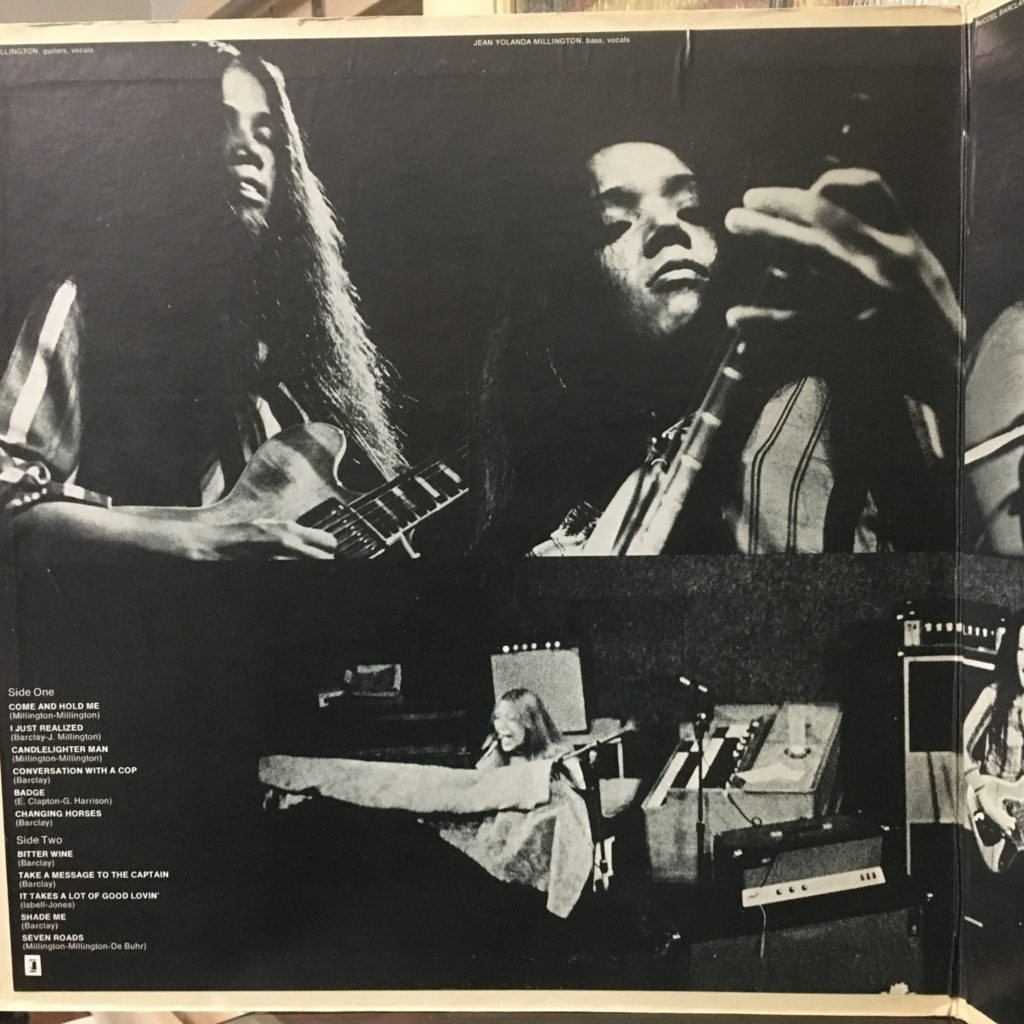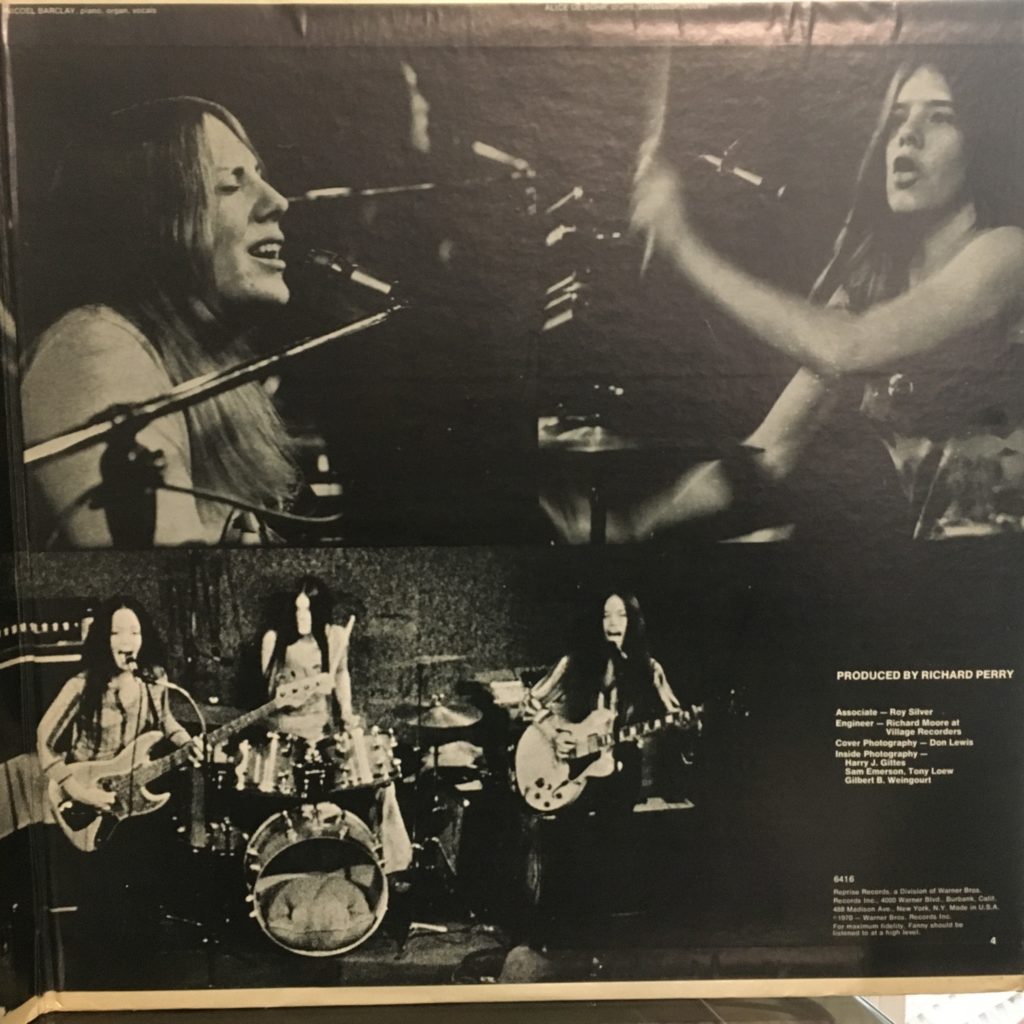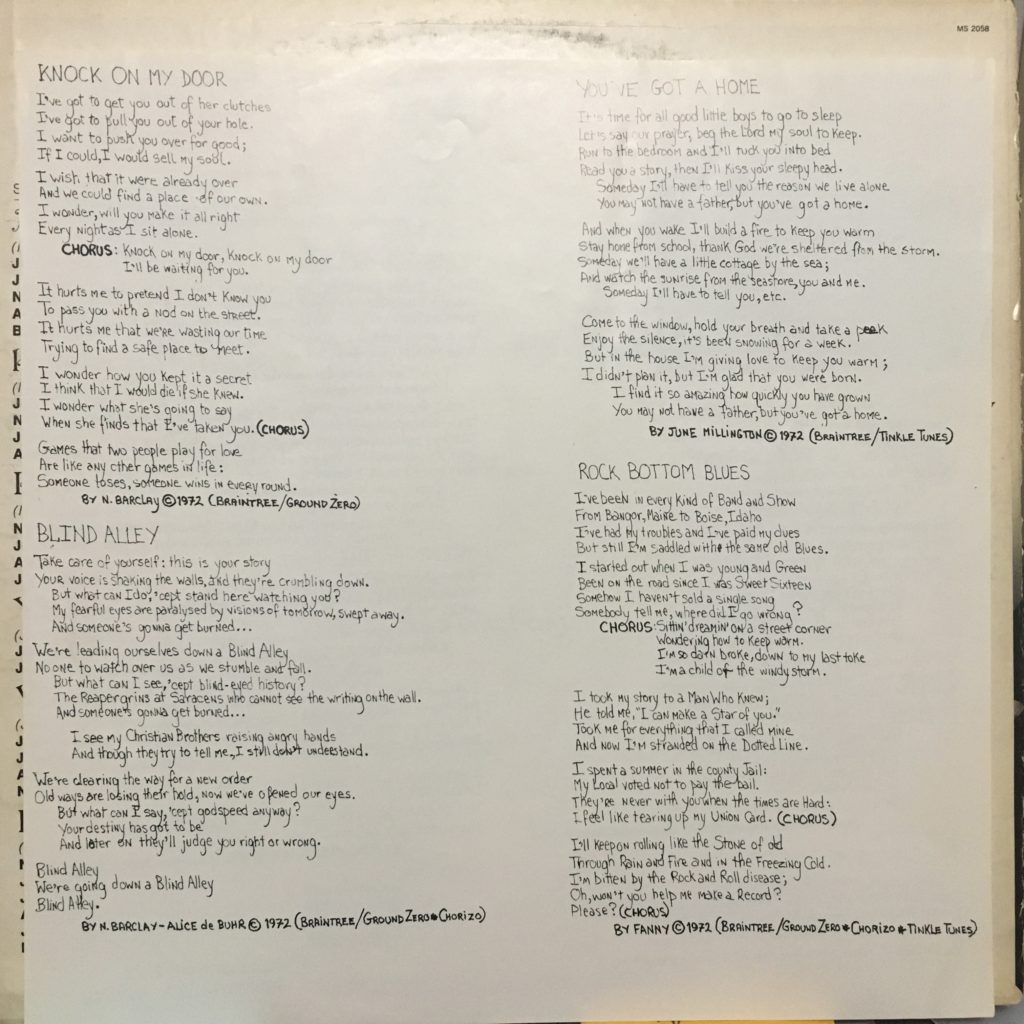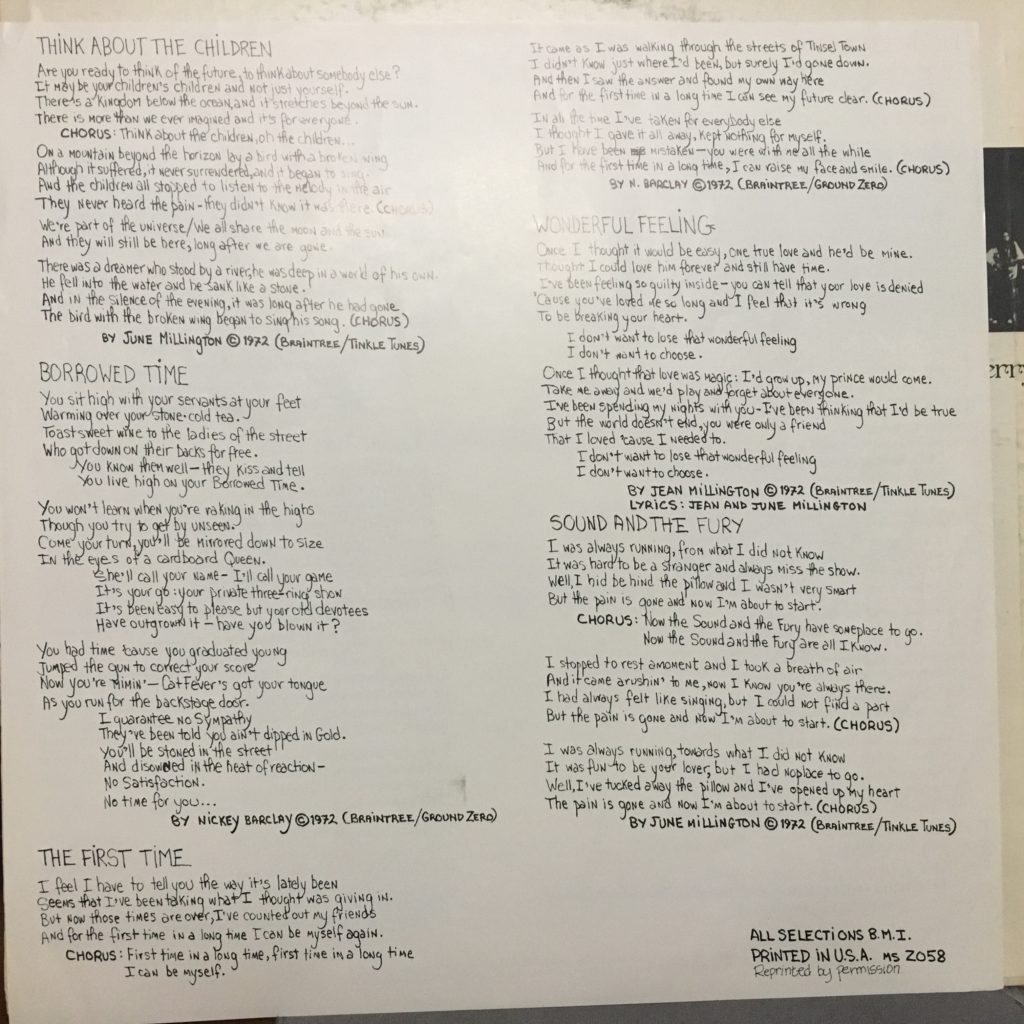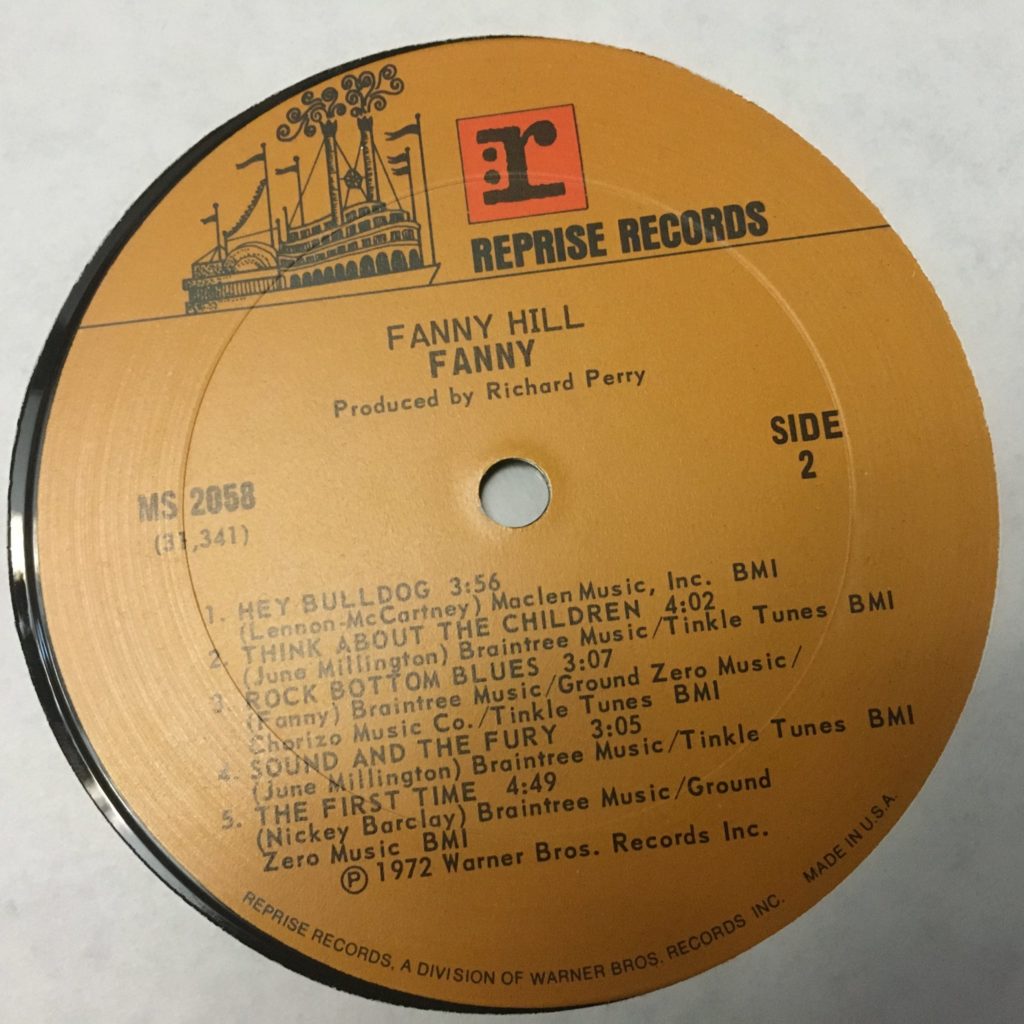I bought this record, Fanny’s third album (1972) at the exact moment I bought their first, so my thoughts are pretty much the same. Their sound is definitely a little more developed since their debut. They were still with their initial producer, the to-be-legendary Richard Perry, and this record was recorded at Apple Studios with the truly legendary Beatles engineer Geoff Emerick — so perhaps it’s no surprise they start off side 2 with a cover of “Hey Bulldog,” which is always a way to get me in the door; they also added some of their own lyrics to it. They also do a cover of Marvin Gaye’s “Ain’t That Peculiar,” with Bobby Keys (of Rolling Stones and Joe Cocker fame) on saxophone. Both really good covers, and their own material is quite as good, again covering a range of rock styles and always sounding good.
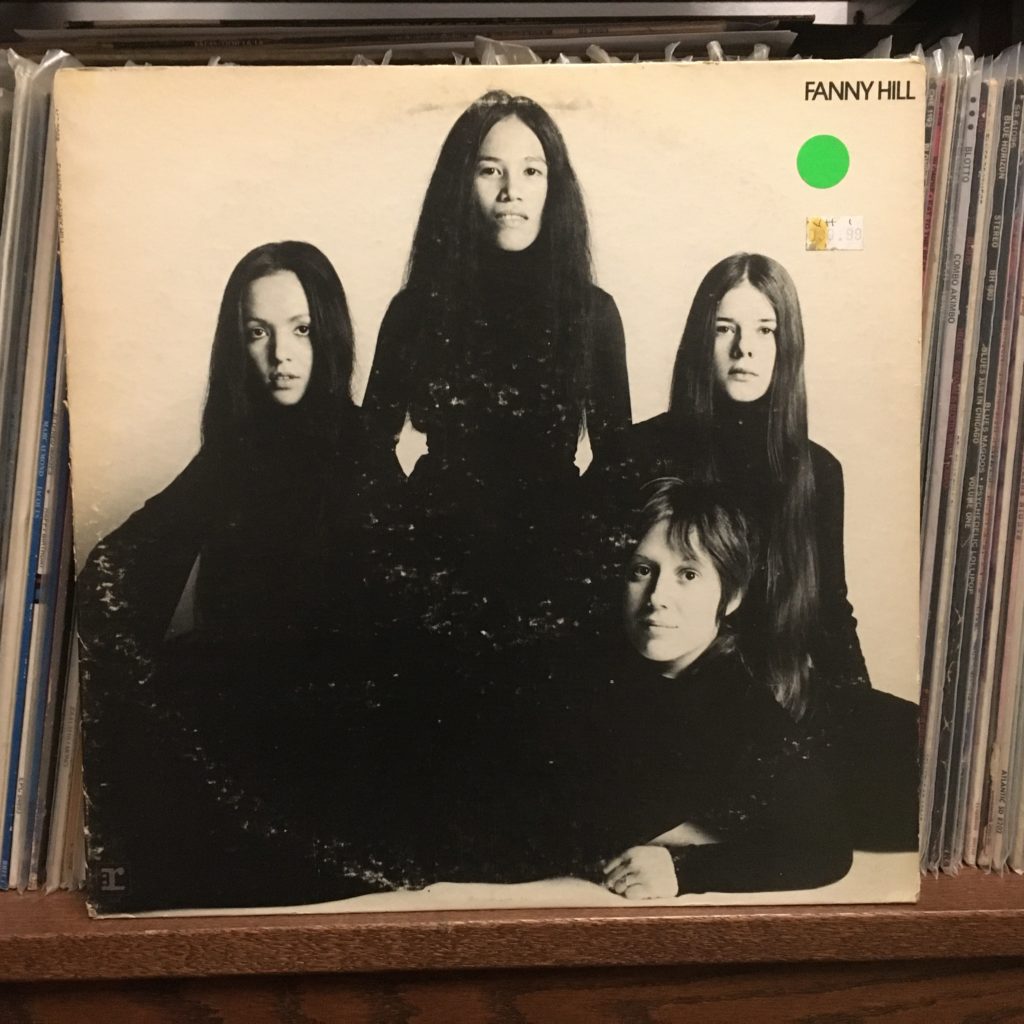
I say that I never heard of them in the ’70s, which of course at this remove means that I don’t remember having heard of them. When I listen to “Charity Ball” it rings the vaguest of bells, but it also sounds like a lot of popular rock of the time and could have been confused with any glam band’s output. So if I heard it, it didn’t register. Everyone talks about how big The Runaways were, but to be honest, I know I really didn’t hear about them until after they were over — and neither did most people. One of only two of their songs to chart in the US was “Cherry Bomb” in 1976 (at #106), and I feel certain it did not get airplay in New York’s Capital District. When Joan Jett built a career on covers, then we started hearing about the pioneering of the Runaways.
Similar with Fanny. I never recall hearing about them, though they were on world tours, they opened for Slade, Jethro Tull and Humble Pie — reading that just makes me feel sorry for them, because I can easily imagine some of the treatment they would have gotten from those audiences.
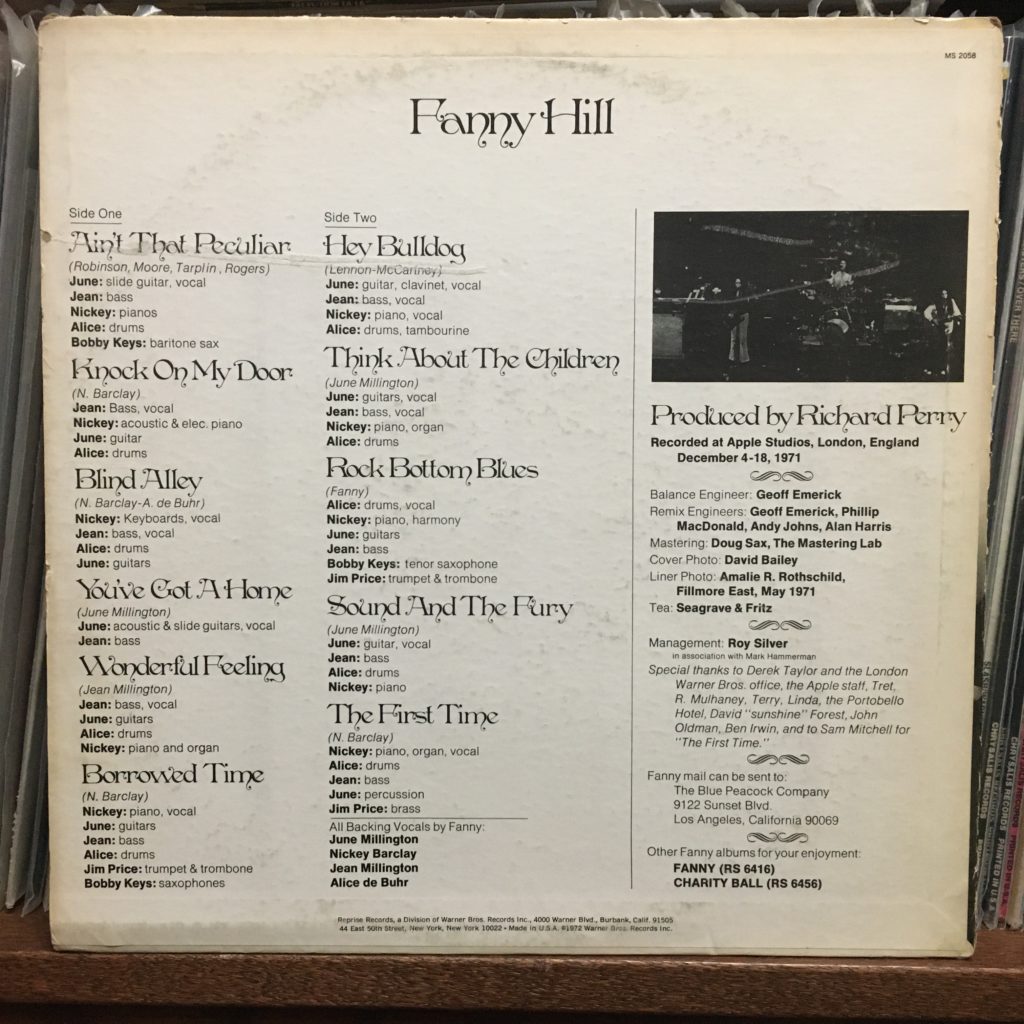
Momentary aside: When I was in high school, back in the mid ’70s, we would periodically be called to school wide assemblies. The purpose of these was always kept somewhat quiet, probably to prevent us from building up a solid hatred of whatever diversion from ordinary classwork we were being provided. Sometimes it would be some sort of bare-bones theatrical production by a touring company — I remember a very enthusiastic and historically wrong production about Thomas Edison. Sometimes it would be a “scared straight” type of thing, a heartfelt plea to not take drugs, something of that nature. Once, with no announcement or seeming purpose, it was a female band.
Here’s how memory has this: We are called to an assembly. We don’t know what the assembly is for, or what it’s about. This is how school works — just go where you’re told. Armed with no foreknowledge, we sit in our huge auditorium and suddenly, for no reason that we can discern, a rock band is introduced. It is a band comprised largely or entirely of females, probably college age. Why they are there, why this band is touring high schools, why we are suddenly going to be given a rock concert in the middle of the day — none of this is explained, at least in my memory.
Now, as bad as you may think things are now, in the 1970s, the levels of misogyny in rock music and rock fandom were off the charts. “Girl groups” were a novelty, and known to do soft rock or girl group pop. For the most part, it seemed like ’70s music fans defined themselves by what they hated, what was not cool — which was anything they weren’t into. Any band that was deemed not to rock hard enough was deemed, of course, “gay.” (I was appalled to find that that pejorative usage was still current when my kids were in high school, too.) Female bands, almost by definition, fell into that category, no matter what they did. There’s an astounding amount of irony to all this — as male stars moved toward hair, makeup and glitter, first in the sorta androgynous glam style and then in the later ridiculous hair metal posturing, their fans became more and more adamant about their masculinity and rejected anything that smacked of the feminine in anyone else. The patriarchy is fucked up, dude. But this meant that time and again, wherever they were, female bands were uniformly treated with less respect by audiences, by critics, and of course by the industry.
And so when a group of young women who had no doubt put endless hours of practice into their act, who had somehow booked a tour of high schools (?), who were bold enough to put themselves out there around 1975, stepped out onto that stage, they were, inevitably, greeted with epic levels of rudeness that can only be found in teenagers. The crowd was cruel. In adult society, if a band you didn’t like came on, you’d clap politely and beg for it to be over. But in teen society, especially then, you’d instead taunt them mercilessly, boo them, harass them until they left the stage in tears. At least, that’s how I recall it. And why were they assaulted in that way? Mostly for being female rockers.
Others may remember it differently, might have more details, could even have some idea of why the band was there in the first place. All I have is an emotional memory of when a very large, scary, boisterous assembly of teenagers booed a group of women off the stage, not because they were particularly bad, but just because they had the audacity to be there in the first place, and that wasn’t what rock ’n’ roll was supposed to be, man! It was appalling, and remains so.
And I imagine that Fanny, opening for bands like Slade and Tull, must have faced that, many times. Audiences could be cruel to opening acts anyway . . . but female ‘70s rockers? I can only imagine.
So I’m sorry for whatever they went through, sorry I never heard of them or caught on to mention of Fanny before, and am greatly enjoying their records a mere 50 years after the fact.

